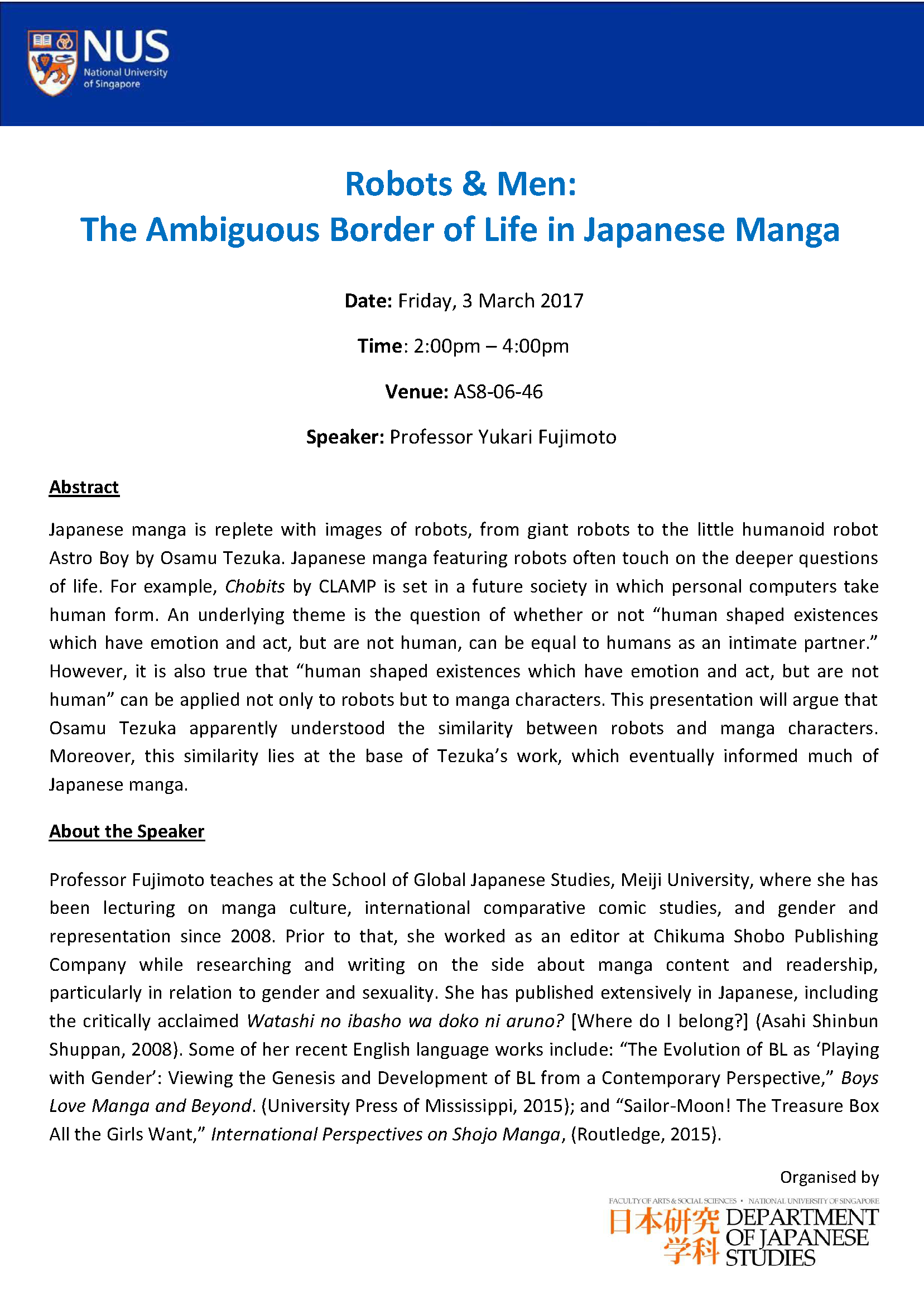Robots & Men: The Ambiguous Border of Life in Japanese Manga
Abstract
Japanese manga is replete with images of robots, from giant robots to the little humanoid robot Astro Boy by Osamu Tezuka. Japanese manga featuring robots often touch on the deeper questions of life. For example, Chobits by CLAMP is set in a future society in which personal computers take human form. An underlying theme is the question of whether or not “human shaped existences which have emotion and act, but are not human, can be equal to humans as an intimate partner.” However, it is also true that “human shaped existences which have emotion and act, but are not human” can be applied not only to robots but to manga characters. This presentation will argue that Osamu Tezuka apparently understood the similarity between robots and manga characters. Moreover, this similarity lies at the base of Tezuka’s work, which eventually informed much of Japanese manga.
About the Speaker
Professor Fujimoto teaches at the School of Global Japanese Studies, Meiji University, where she has been lecturing on manga culture, international comparative comic studies, and gender and representation since 2008. Prior to that, she worked as an editor at Chikuma Shobo Publishing Company while researching and writing on the side about manga content and readership, particularly in relation to gender and sexuality. She has published extensively in Japanese, including the critically acclaimed Watashi no ibasho wa doko ni aruno? [Where do I belong?] (Asahi Shinbun Shuppan, 2008). Some of her recent English language works include: “The Evolution of BL as ‘Playing with Gender’: Viewing the Genesis and Development of BL from a Contemporary Perspective,” Boys Love Manga and Beyond. (University Press of Mississippi, 2015); and “Sailor-Moon! The Treasure Box All the Girls Want,” International Perspectives on Shojo Manga, (Routledge, 2015)


